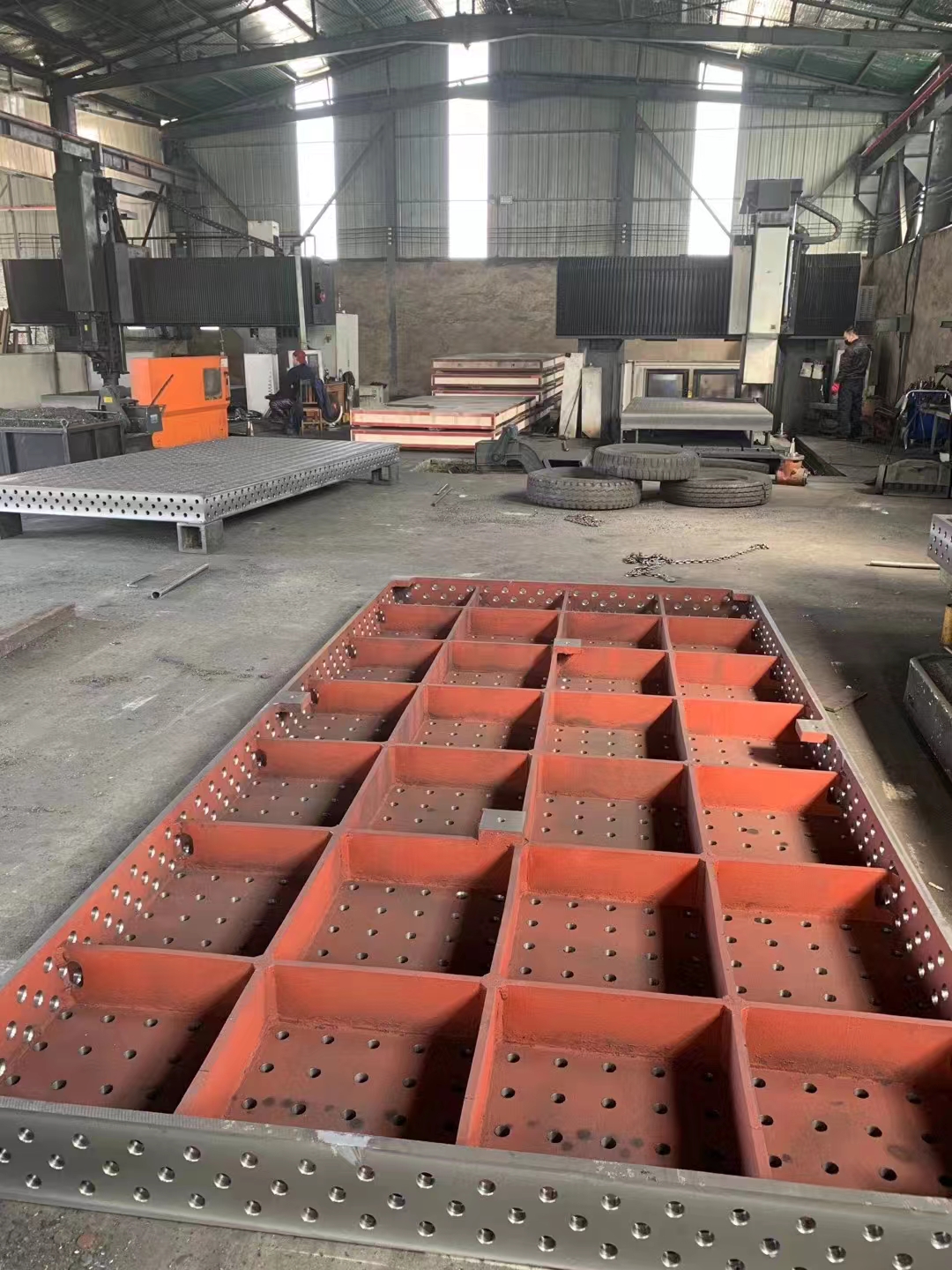- English
- Español
- Português
- русский
- Français
- 日本語
- Deutsch
- tiếng Việt
- Italiano
- Nederlands
- ภาษาไทย
- Polski
- 한국어
- Svenska
- magyar
- Malay
- বাংলা ভাষার
- Dansk
- Suomi
- हिन्दी
- Pilipino
- Türkçe
- Gaeilge
- العربية
- Indonesia
- Norsk
- تمل
- český
- ελληνικά
- український
- Javanese
- فارسی
- தமிழ்
- తెలుగు
- नेपाली
- Burmese
- български
- ລາວ
- Latine
- Қазақша
- Euskal
- Azərbaycan
- Slovenský jazyk
- Македонски
- Lietuvos
- Eesti Keel
- Română
- Slovenski
- मराठी
- Srpski језик
What are the material options for welding tables in industrial welding?
2024-08-22
In industrial welding, there are several material options for welding workbenches:
I. Cast iron
Advantages:
High stability: Cast iron has a high density and good stability. It can withstand large impacts and vibrations, ensuring that the workbench does not shake during the welding process.
Good wear resistance: The surface of cast iron has a high hardness and can resist wear and scratches during welding. It is not easily deformed after long-term use.
Good heat dissipation: Cast iron has good thermal conductivity and can quickly dissipate the heat generated during welding, reducing the temperature of the workbench and protecting the tabletop and workpieces.
Relatively low cost: Compared with some high-end materials, cast iron is more economical and suitable for large-scale production and use.
Disadvantages:
Heavy weight: Cast iron workbenches are relatively heavy, making transportation and installation relatively difficult. Lifting equipment or multiple people are needed for cooperation.
Prone to rust: If proper protective treatment is not carried out, cast iron is prone to rust, affecting its appearance and service life.
II. Steel
Advantages:
High strength: Steel has high strength and rigidity and can withstand large loads and pressures. It is suitable for various heavy welding tasks.
Good processability: Steel can be processed into workbenches of various shapes and sizes through cutting, welding, bending, and other processing methods to meet different welding needs.
Diverse surface treatments: Surface treatments such as painting, galvanizing, and chroming can be applied to steel workbenches to improve their corrosion resistance and aesthetics.
Disadvantages:
Poor heat dissipation compared to cast iron: The thermal conductivity of steel is relatively poor. During welding, it may cause excessive local temperature on the workbench, affecting welding quality.
Large price fluctuations: The price of steel is greatly affected by market supply and demand, and price fluctuations are relatively frequent.
III. Aluminum alloy
Advantages:
Light weight: The density of aluminum alloy is small, making the workbench lightweight and easy to carry and move. It is suitable for use in different workplaces.
Good corrosion resistance: The surface of aluminum alloy easily forms a dense oxide film, which has good corrosion resistance and can be used in humid and corrosive environments.
Better heat dissipation: The thermal conductivity of aluminum alloy is better than that of steel and can quickly dissipate heat and reduce the temperature of the workbench.
Disadvantages:
Relatively low strength: Compared with cast iron and steel, the strength of aluminum alloy is lower and it cannot withstand excessive loads and pressures.
Higher price: The production cost of aluminum alloy is relatively high, resulting in a higher price than cast iron and steel.
IV. Composite materials
Advantages:
High strength: Some high-performance composite materials have high strength and rigidity and can even exceed steel and cast iron.
Strong corrosion resistance: Composite materials can be formulated according to different use environments and have excellent corrosion resistance and can be used in harsh working conditions.
Lightweight: The density of composite materials is small, and they are lightweight and easy to carry and install.
Disadvantages:
High cost: The production process of composite materials is complex and costly, limiting their application in some ordinary welding tasks.
Difficult welding: The welding of composite materials requires special welding techniques and equipment, and the welding is more difficult.





